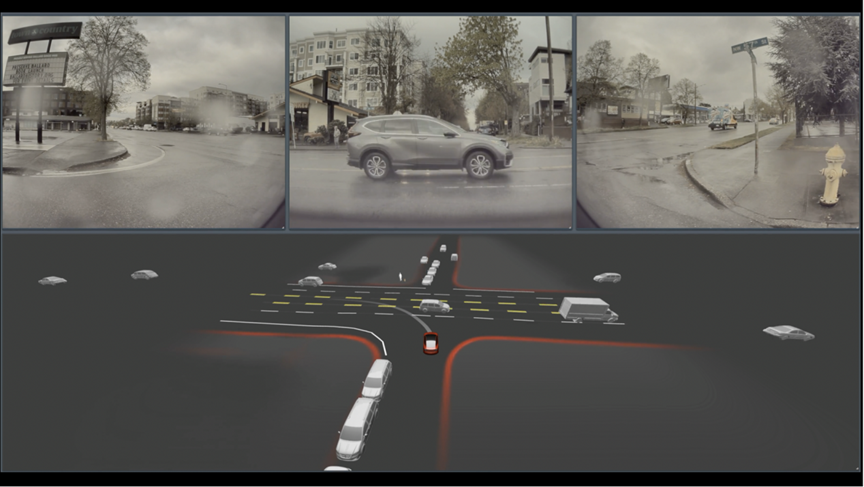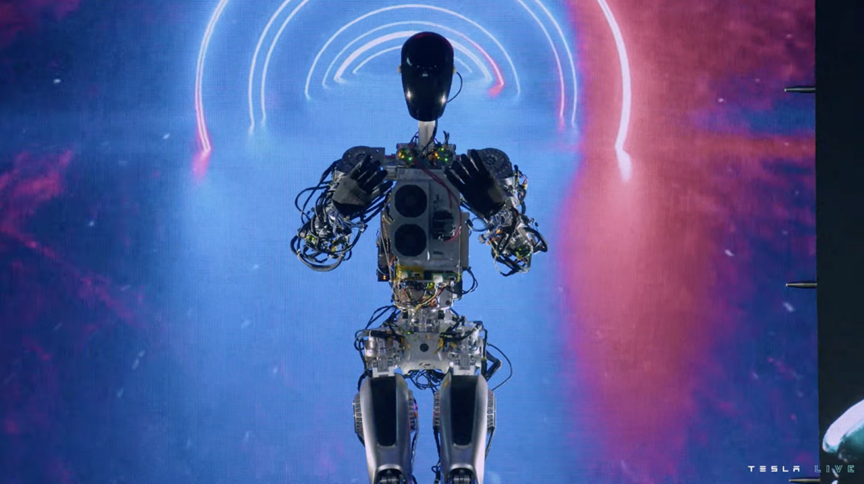Author | Shiyun Zhu
Editor | Shiyun Zhu
Boston Dynamics robots can parkour and dance, while Tesla’s Optimus Prime just started tremblingly watering plants; FSD Beta’s “point-to-point” navigation within the city from one parking lot to another has already been released in small batches to users by XPeng and Huawei since the end of September; could unbeatable Dojo actually take down Nvidia?
According to the Tesla AI DAY that only 0.001% of people can understand, the results presented seem plain and ordinary.
Hardcore knowledge still needs experts to deconstruct.
On October 9th, “EV Observer” invited “the one-in-a-hundred-thousand brain:” Dr. Luo Heng, Head of the BPU Algorithm of Horizon Robotics; Dr. Guo Jishun, Vice President of Junson Electronics, and Dean of Junson Intelligent Automotive Technology Research Institute, to take a second look at the Tesla AI DAY 2022.
We will analyze the hardcore knowledge points, look at the business logic behind the technology, and discuss the hot topics in the industry that concern you.
Is Tesla’s Optimus Prime “weak”?
Although it staggers when raising its knees and taking small steps, Tesla’s Optimus Prime is already a “worker”. It has been put to simple work at Tesla’s Fremont factory, with a planned pathway designed for it.
On October 1st, Beijing time, the Tesla Bot humanoid robot “Optimus” (aka Optimus Prime) prototype made its global debut. The prototype did not have a shell, directly showing the internal structures such as joints, bones, and cables to intuitively display various action details.
At the event, Optimus walked independently for the first time without human operation.
In the video, Optimus performed actions such as watering plants, moving boxes, carrying aluminum bars, and actively avoiding people around it.
Tesla’s founder, Musk, said: “Our output should be able to reach millions. It is expected that its price will be much cheaper than cars, and it is estimated that the ultimate price of the robot will be less than $20,000.” He also predicted that Optimus could be mass-produced and put on the market within the next 3-5 years.
Musk positioned Optimus as “able to do the mundane, dangerous, and repetitive work that people don’t want to do.”## Tesla’s Cybertank Falls Short of People’s Ideal Robot
From the current display of functions, Tesla’s Cybertank is far from the ideal robot people have envisioned. Boston Dynamics’ bipedal robot Atlas can travel at a speed of 1.5m/s, can parkour, and even dance; while Cybertank, based on the configuration of traction rope, can only perform actions such as walking, climbing stairs, squatting, and picking up objects.
Does this mean that Cybertank is weak?

Luoheng said that this demonstration of Cybertank was just a basic showcase of Tesla’s robot architecture design, and even the architecture itself may undergo several iterations in the future. However, it should be noted that innovation comes from real-life applications. Cybertank is a robot designed for mass production, which is also the difference between Tesla and other robot companies.
In fact, if we look at the specific application scenarios, such as large-scale production, to replace human labor in tedious, dangerous, and repetitive tasks, the distributed actuators, biomimetic joints and tendons, reuse of FSD neural networks, and reuse of Tesla’s car batteries and safety simulation analysis capabilities of Cybertank become very imaginative.
“Tesla does not want to do the world’s most advanced technology but wants to make the most advanced products,” commented Guo Jishun on Cybertank.
Can “Autonomous Driving” Really Be Achieved?
Musk has repeatedly promised that full autonomous driving is coming, and Tesla is nothing without FSD. XPeng Motors, Ideanomics, and even Huawei have all set timelines to achieve full autonomous driving capabilities. As industry observers, we have become impatient with waiting for autonomous driving.
Robo and Guo Bo both told us that autonomous driving is getting closer and closer.
Although it didn’t make as much of a buzz as the transformer algorithm model and BEV framework did in the actual application of autonomous driving last year, Tesla’s demonstration of applying NLP (natural language processing) models and methods to optimize existing ones for autonomous driving in urban areas this year is of great significance.

Luoheng said that the biggest improvement of this year’s FSD beta is in dealing with various complex intersections and lane changes. This should mainly come from the lane network. Tesla has actually designed a language model for lane lines. Lane lines are composed of dots and connecting lines, and dots can be classified as “beginning,” “continuing,” “diverging,” and so on.In addition, the automatic annotation method has been put into practice as a system from last year’s conceptual methodology, and the input and output features in the middle are explained clearly.
In terms of results, the participation in FSD Beta testing has increased 80 times to 160,000 cars in one year, and the daily data collection volume has reached 100,000-500,000 through automatic annotation technology, Tesla has increased the annotation speed of training scenarios by 1,000 times.
In addition, Tesla’s infrastructure such as virtual simulation, data-closed-loop training, and Dojo supercomputer center will further promote the comprehensive landing of its FSD capabilities.
“Tesla’s automation level and efficiency (annotation, simulator), which are already the main reliance on automated data annotation, are rapidly improving, which means faster convergence of corner cases in the physical world, and autonomous driving is getting closer,” said Luo Heng.
So is LiDAR still necessary? What is the future of Chinese players on the self-driving track?
Dojo is the core infrastructure for Tesla’s autonomous driving capabilities.
In the first quarter of 2023, Tesla will deploy the first batch of 10 Dojo supercomputing machine cabinets, i.e. ExaPOD with computational power of over 1.1EFLOPS, which will increase the automatic annotation capability by 2.5 times. In the future, Tesla will deploy seven such clusters in Palo Alto.
If we look at the pure computing power of a machine cabinet, Dojo is not yet enough to challenge Nvidia.
In March, Nvidia released the Eos supercomputer, which consisted of 18 DGX POD machine cabinets and had an AI computing performance of up to 18.4EFLOPS. For traditional scientific computing, Eos is expected to provide performance of 275 PFLOPS.
However, they are in a different league when it comes to the needs of autonomous driving.
Tesla describes its Dojo as: using only a training module composed of 25 D1 chips to achieve the performance of six GPU boxes, with a cost lower than that of one GPU box; only the computing power of four Dojo supercomputing machine cabinets can achieve the automatic annotation performance of 72 GPU cabinets.
After the Dojo supercomputer is put into use, Tesla has already achieved a 30% improvement in training speed in terms of code and design, and greatly improved the annotation speed of training scenarios through automatic annotation technology, saving time by weeks or even months compared to manual operation.Did Tesla Win the Battle Against NVIDIA Data Center in the Autonomous Driving?
Under the efficient neural network training, Tesla FSD software has gradually matured in terms of technology. Musk said, “Currently, FSD software can be applied to road conditions in various regions around the world. If local regulatory policies allow, we can release the FSD Beta software globally by the end of this year.“
Are humanoid robots and self-driving cars really not far away?
Can China’s auto industry replicate Tesla? Does China’s auto industry need to replicate Tesla?
Let’s discuss it in detail on October 9th!
This article is a translation by ChatGPT of a Chinese report from 42HOW. If you have any questions about it, please email bd@42how.com.
